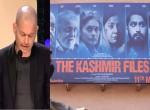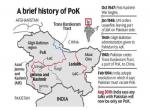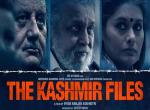Violence is a type of backwardness and it is enormously powerful tool to coerce the communally fractured population to revolt against the state. But sustaining the uprising would need psychological mentoring and shaping of the perception of the people against the state. Physical violence in Jammu and Kashmir (J&K) commenced in early 90’s but passive aggression that targeted multi-cultural and multi-religious society started much earlier. In fact, Pakistan found a deadly mix of direct violence with cultural and structural violence to target secular and democratic institutions of the state.
Johan Galtung a Norwegian Peace Researcher said, “Structural violence is injustice and exploitation built into a social system that generates wealth for the few and poverty for the many, stunting everyone’s ability to develop their full humanity.” The political and administrative system created an environment where the administrative machinery is manipulated to benefit few with the result that the majority is deprived. He further says, “Cultural violence is the prevailing attitudes and beliefs that justify and legitimize the structural violence, making it seem natural.”1 Cultural violence is acceptance of social, political and cultural ills as part of the system. When combined with the direct violence it denies the space for reconciliation. If the conflict in Kashmir is empirically examined, Pakistan has taken advantage of cultural and structural violence that existed in Kashmir to exploit the fracture and void created by political and administrative system. Pakistan just used the governance deficit to set in motion an asymmetric and hybrid war.
The state responded firmly against the direct violence but left the fast receding public and private space uncontested that was slowly acquired by radicals and proxies of Pakistan. It is an irony that neither political leadership nor other organs of the state could identify the multi-dimensional aspects of this war. The disaffection and perceptional change has not come suddenly but it is the result of a well-choreographed strategy by Pakistan through its proxies to shape the perceptions of the individuals and the society. Pakistan itself is surprised at the success of their hybrid war strategy in Kashmir and except for dealing with terrorism, India has found it hard to confront other dimensions of the hybrid war. It could be due to lack of understanding or lack of asymmetric and hybrid capabilities to respond back to Pakistan.
After three decades of conflict in Kashmir physical violence has done lesser harm to the Kashmiri society but cultural and structural violence has caused irreversible damage. Pakistan was aware that they cannot fight and win war on Kashmir militarily but will have to adopt a strategy of direct and passive aggression (passive aggression is difficult to detect till it has already achieved the operational objectives and is one of the most potent component of hybrid war). As part of the passive aggression Pakistan put into effect two strategies. The ‘inner front strategy’, by working against the state from within, focused on creating a perception that people of Kashmir are victim of Indian occupation and Kashmir is not an integral part of India. The strategy created a psychological hatred towards the symbol of India and a perception that political system is a puppet regime imposed on people of Kashmir. Thus eroded and discredited administrative and political system of J&K. Second, ‘misperception strategy’ by weaving seamless blend of facts and fictions at such a rapid pace, ultimately controls the perception of the people and fog their logic to decipher truth from lies. This was being done when India was largely focused on dealing with the terrorism and these two strategies almost went unnoticed. But what was going behind the fog of mistrust and misrepresentation was neither effectively contested nor disrupted.
What did Pakistan do to Destroy the Enlightened Values of Kashmiris?
Pakistan, through its proxies and modules, commenced obliteration of history and culture from collective memory of the people and society. Pakistan and its proxies targeted the very platform that bonded with other cultures, faith and societies by denouncing Sufism, Kashmir folk culture, music and Kashmiri poetry as un-Islamic practice and Hindu conspiracy against the Muslims of Kashmir. Pakistan found that biggest impediment in creating a space to fight from within Kashmir were Kashmiriyat, Shrine and Sufism. Pakistan proxies found it easy to indoctrinate youth and difficult to alter the faith of the older generation from Kashmiriyat, Shrines and Sufism. Simultaneously, it blocked and disrupted the intellectual discourse among the people of different faith and community. In order to kill memory and collective wisdom they chose to kill the sense of judgment of the people and social order by calibrated violence and targeting the institutions that were custodian of societal conscience. Pakistan through their proxies destroyed everything that belonged to the people so that they could write new narrative to create disaffection with India. The stone pelting, intolerance among people and youth against the symbol of India is the outcome of this passive aggression of Pakistan that went uncontested for over three decades now.
The characteristics of Pakistani propaganda is that it is generating very strong emotions, aggression, and has managed dramatic departure of society from the reality. 2 The manufactured lie and web of misinformation by Pakistan has created societal amnesia that has managed to disorient and destroy the cultural heritage that had survived for more than 2500 years. Pakistan on one hand targeted cognitive domain of the Kashmiri Awam and on other side it targeted Indian state. In reality, Pakistan managed to pitch people against the state. This is one of the objectives of hybrid war which Pakistan has ably achieved.
The contours of asymmetric and hybrid war started emerging clearly sometime post 2005 when terrorism and violence was brought to a manageable limit by security forces. But the inability of the state in deliverance of governance gave a window of opportunity to Pakistan to shift gear and put in place more lethal hybrid war in practice. In fact, the dimensions of non-linear warfare are very wide and are very difficult to contain once it gets space to operate. India committed cardinal mistakes when it defined conflict in Kashmir as militancy, and later as proxy war. On the political front within Kashmir, successive governments termed it as separatist’s movement but probably they overlooked the contours of conflict that were indicative of more lethal hybrid war. But if the trend lines are examined carefully, it has all the ingredients of a potent hybrid war and response thereof should have been hybrid in nature. To consider that such a war can be handled by military was a miscalculation and the government continues to commit this cardinal mistake even today. One must realise that elimination of terrorists is insignificant if state is unable to win back the trust of the people.
Condition of Kashmir today is similar to Rome when Roman Empire fell and state plunged into chaos and unfolded an era that was characterized by barbarism, intolerance and regression. What happened in Rome was in complete contrast to the cultural richness of earlier society of Rome. Similarly, Kashmir is plunging into an irretrievable chaos in contrast to its culture that propagated peace, prosperity and co-existence of pluralistic society. In spite of the repeated invasion on Kashmir it maintained principle of co-existence of multiethnic and multi religious societies that were strengthened by enlightened values of the Kashmiri culture. The Kashmiriyat survived because the past invaders attacked the physical characters of the state but did not attack the enlightened values of Kashmiriyat. Whereas, Pakistan has been shrewd enough to identify this aspect and systematically dismantled the enlightened values of Kashmiriyat to change the course of the conflict. Herbert Schillar had said free and equal access to knowledge act as bulwark to meet the democratic aspirations of the people and nation. 3 Problem of Kashmir is that the access to knowledge has been blocked through a narrative propagated by radicals by converting the very temples of knowledge (Education Institutions) into radicalisation centers that denounced the Kashmiriyat and cultural heritage.
Has Pakistan Disabled Kashmir Politically and Psychologically?
Once the state is fractured on ethnic, religious and cultural lines, dysfunctional and corrupt administration provides an ideal target for psychological warfare and a strategic window of opportunity to a shrewd adversary.4 A peace and war scenario has been fatally blurred in Kashmir and unfortunately the security forces and intelligence agencies have completely overlooked and misjudged the potential of this dimension of hybrid war in Kashmir. This phenomenon is evident from the fact that tourism, education, health services, law and order, developmental activities and public grievances system has collapsed and stand completely eroded. Democratic institutions stand marginalised and discredited. Drug menace, black marketing of essential goods, smuggling of timber and fake currency have become backbone of a parallel conflict economy. A state without liberty and individuality has no future and that is what Pakistan has managed to do with the people of Kashmir. On the name of self-determination people have no voice of their own and the emotions are controlled and charged by proxies. People seems to be slaves of the dictates of the terrorists and separatists. People know the disastrous consequences of the harm Pakistan has done to the current and future generations of Kashmir but the anti-India sentiment is so strong that people refuse to see the logic. It is evident that Pakistan has effectively disabled Kashmir politically and psychologically.
The government should acknowledge that application of military force is not a solution to the complex problem of Kashmir. It is psychological, attitudinal, social, political and economic. Government should worry more about wining trust of the people back and let the terrorism be handled by the security forces.
It is a Different War that India Needs to Defeat
Is there something repeatedly irrational that India continues to choose to fight hybrid war by conventional means? General Gerasimov, Chief of General Staff of Russian Armed Forces, wrote that “The very rules of war has changed. The role of nonmilitary means of achieving political and strategic goals have grown, and, in many cases, they have exceeded the power of force of weapons in their effectiveness especially against hybrid threat.”5 Domination of informational battle has become essential components of modern warfare and it cannot be left uncontested. The information war has no relation to reality and is a provocation that is employed to disorient the population, security forces and to create a window of opportunity for non-state actors to exploit the exposed flanks. Whereas, counter measures should hit the enemy with strategies that appear noble and benign and operate completely outside the conventional domain. One of the principles of fighting a hybrid war is that there is no moral taint to fight it because hybrid war is fought in moral and immoral domain. Thus moral high ground in combating hybrid or unrestricted war is willful acceptance to fight with a handicap and it is a retrograde strategy.
Focus of the Government of India and J&K should be to win the trust of the people. No nation can achieve greatness by defeating its own people. Ultimately the people should emerge winner because state consists of its people. Thus rhetoric and media barbs needs to be moderated so that it does not give an impression that state is fighting against its own people. The perception in valley is that India is against people of Kashmir. This perception needs to be altered through continuous interaction and reconciliatory discourse. The Gerasimov doctrine on hybrid war calls for the fundamental blending and integration of the non-military means with the conventional and sub conventional military tools. What India should learn from the Gerasimov doctrine is the coordination between military and non-military actors with an objective to deal with direct, cultural and structural violence. Hybrid war requires people centric focus, the space that is acceded to non-state actors or proxies can be regained by deliverance of governance and a sustained psychological and information war by involving people of Kashmir.
It will be fatal to believe that India will be able to defeat the hybrid threat from Pakistan while fighting it in Kashmir. Kashmir war has to be fought in Pakistan Occupied Kashmir (POK), Baluchistan and even at global level. It is absence of strategic thinking if India choses to fight the Kashmir war within Kashmir; it is important to deny exposed flank to reverse the threat where it hurts the most. Government should handle Kashmir under the following verticals:-
• Fight Hybrid war with hybrid resources. Military and non-military resources should be applied in a synergized manner to address each aspect of nonlinear character of hybrid war in Kashmir. It will bear fruits if it is continuous and maintained at a sustained pace.
• Focused and concerted efforts to defeat strategy with a superior strategy. There is no moral taint to invoke ‘strategy of inner front’ and ‘misperception strategy’ against Pakistan. The loss to Pakistan should be unbearable. Julius Caesar had said, “No one is so brave that he is not disturbed by something unexpected”. 6 India must look at unexpected and beyond the conventional limits.
• If the centre of gravity is the people, in that case first and foremost is deliverance of governance. If political leadership fails to achieve this, it must be executed professionally by an executive council consisting of professionals, politicians, bureaucrats and law enforcing agencies of high integrity.
Conclusion
Application of a strategy must have continuity, consistency and surprise factor. Synergy and simultaneity is a must to deal with an adversary that has mastered the art of asymmetric and hybrid war. To defeat passive aggression, India must bridge the void and deny exposed flanks. Essence of fighting such a war is, ‘give no targets before you strike back’. Every strategy has an ideal counterstrategy,7 it is unlikely that all strategies will favour Pakistan, some strategies could be employed to reverse the threat and those strategies need to be identified and exploited. Policy makers must remember that at times killing and elimination of terrorists and insurgents unite their ranks and files in desperation. Undue highlighting of the success achieved by security forces could be counter-productive and may lead to alienation of the population further. There is a need to show humane side after the terrorists and insurgents are eliminated especially with the friends and family.
There may be a wisdom to follow what Machiavelli said, “assault a disunited city to seize it” and “unite a divided city so as to hold it”. 8 Wise of the city must sit down to bring back the memory of peace, tranquility and communal harmony that protected the Kashmiri culture for more than 2000 years, making efforts through reconciliation to reorder, reunite and restore sanity in Kashmir. Indian policy makers must remember what Edward Luttwak said, “Insurgents do not always win, but their defeats can rarely be attributed to counter-insurgency operations”.9
Endnotes
1. William T. Hathaway, Varieties of Violence: Structural, Cultural, and Direct, Transcend Media Service, October 21, 2013.
2. Armand Gosu and Octavian Manea, The Russian psychological warfare, Accessed from http://www.roec.biz/bsad/portfolio-item/the-russian-psychological-warfare/ on October 19,2017.
3. Rebecca Knuth, Libricide: The Regime-sponsored Destruction of Books and Libraries in the Twentieth century, Praeger Publications, P 34.
4. Armand Gosu and Octavian Manea, The Russian psychological warfare, Accessed from http://www.roec.biz/bsad/portfolio-item/the-russian-psychological-warfare/ on October 19,2017.
5. Mark Galeotti, “The Gerasimov Doctrine and Russian Non-linear War”, July, 2014. https://inmoscowsshadows.wordpress.com/2014/07/06/the-gerasimov-doctrine-and-russian-non-linear-war/
6. Robert Greene, The 36 Strategies of War, Viva Books Pvt Ltd, 2006, P 317.
7. Ivan Arreguín-Toft, How the Weak Win Wars A Theory of Asymmetric Conflict, International Security, Accessed from https://web.stanford.edu/class/polisci211z/2.2/Arreguin-Toft%20IS%202001.pdf on Oct 20,2017, P 104.
8. Patrick J. Coby, Machiavelli’s Romans: Liberty and Greatness in the Discourses on Livy, Lexington Books, 1999, P 127.
9. Raj Shukla, Review Article Counter-Insurgency Warfare as Military malpractice by Edward Luttwak published in CLAWS Journal Summer 2012.
(Views expressed are of the author and do not necessarily reflect the views of the VIF)
Image Source: http://www.huffingtonpost.in/yashwant-deshmukh/dear-rajdeep-i-am-not-com_b_9290564.html











Thank you sir for enlightening on hybrid war and emphasising to counter the situation by using both non-military and military ways.
Post new comment